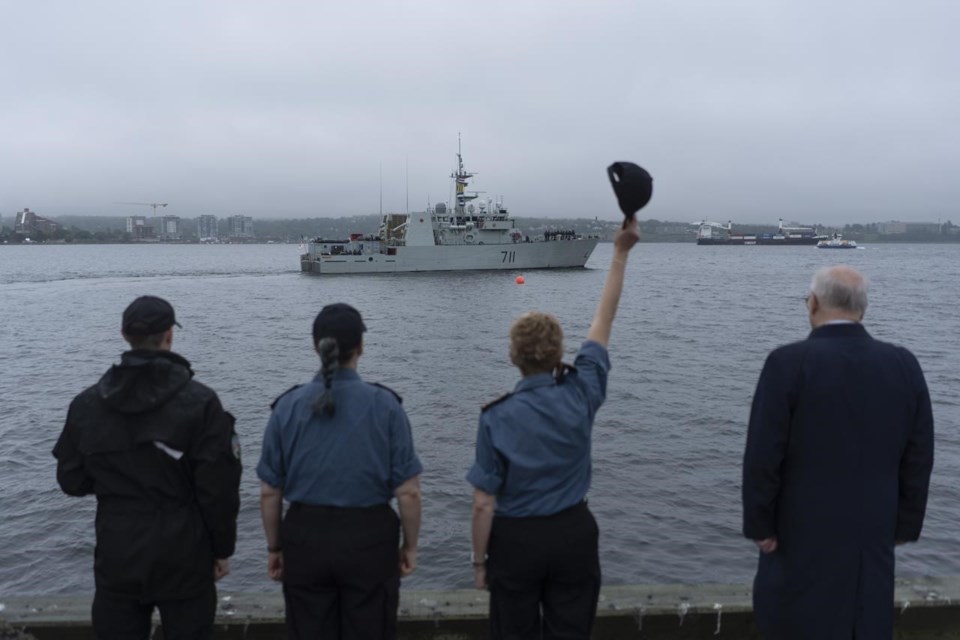HALIFAX — Two Royal Canadian Navy warships sailed out of Halifax harbour Monday, bound for the Baltic region where they will join a NATO mission aimed at deterring Russian aggression.
The vessels, HMCS Shawinigan and HMCS Summerside, will help NATO forces with mine-hunting and disposal in the North Atlantic as part of Operation Reassurance.
Rear Admiral Josée Kurtz, commander of Joint Task Force Atlantic, said the deployment signals Canada's commitment to the 31-country alliance.
“Even if NATO is not directly involved in what's happening in Ukraine with Russia, the fact that we are positioning the alliance to be ready to react, if called upon, is very important,” she told reporters after the ships left the harbour.
The "allied waters will be much safer" because they are being patrolled by Canadian ships, she added.
While NATO is not directly involved in Russia's war with Ukraine, a top NATO military officer said Monday the alliance is reinforcing the security of nearby member countries.
Admiral Rob Bauer, chairman of NATO's military committee, said about 40,000 troops are on standby from Estonia in the north to Romania on the Black Sea in the south.
As well, about 100 aircraft take to the skies in that territory each day, and a total of 27 warships are operating in the Baltic and Mediterranean seas, but those numbers are set to rise. Under a new plan, NATO aims to have up to 300,000 troops ready to move to its eastern flank within 30 days.
Bauer, who serves with the Royal Netherlands Navy, told the Associated Press that NATO’s new plan is based on the strength of the Russian army before President Vladimir Putin launched the war on Ukraine almost 17 months ago. He said the war has depleted Russia’s army, but not its navy or air force.
Meanwhile, the latest NATO mission for Canada marks the first deployment for HMCS Shawinigan as part of Operation Reassurance, and the second full-length deployment for HMCS Summerside. Both coastal defence vessels are carrying about 45 sailors, and will be deployed for four months.
As Jacqui Empson-Laporte watched HMCS Summerside depart the jetty, she waved goodbye as her 22-year-old son, Ryan Forbes, left on his first deployment.
She said she wants her son to see the world, as she held a hand-painted banner that read, "Be safe, learn lots, enjoy the experience."
Malorie White's husband Perry White was aboard HMCS Shawinigan. She said his frequent deployments have been difficult for their two children, aged seven and three.
"But I'm really proud of him today," she said.
Following Russia’s annexing of Crimea in 2014, Canada has sent navy ships to participate in Operation Reassurance since 2014, deploying approximately 2,430 military personnel to the mission.
This report by The Canadian Press was first published July 3, 2023.
-- With files from Associated Press.
---
This story was produced with the financial assistance of the Meta and Canadian Press News Fellowship.
Marlo Glass, The Canadian Press
Note to readers: This is a corrected story. A previous version erroneously said Perry White was serving on HMCS Summerside.



